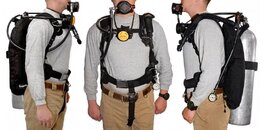So many possibilities...why and whats best for recreational diving? I realize this will provoke many responses and some heated debate, but I'm interested in hearing from seasoned divers (and newbies) as to why they have their reg set up the way they do? What made them change styles?
Pictures PLEASE!
As you can see, I use a swivel on my second. a necklace for my Octo (but I find this claustrophobic at times and remove it to my vest) and two snap rings....I also am utilizing a long hose for my secondary...for no other reason than it came with the setup. I like this so if I have to offer my secondary to a buddy, they aren't all over my space
https://photos.google.com/photo/AF1QipPMtjWCXyCpfCpht0LtSHKMWgfWKK3Bt-7KAf17
Pictures PLEASE!
As you can see, I use a swivel on my second. a necklace for my Octo (but I find this claustrophobic at times and remove it to my vest) and two snap rings....I also am utilizing a long hose for my secondary...for no other reason than it came with the setup. I like this so if I have to offer my secondary to a buddy, they aren't all over my space

https://photos.google.com/photo/AF1QipPMtjWCXyCpfCpht0LtSHKMWgfWKK3Bt-7KAf17




